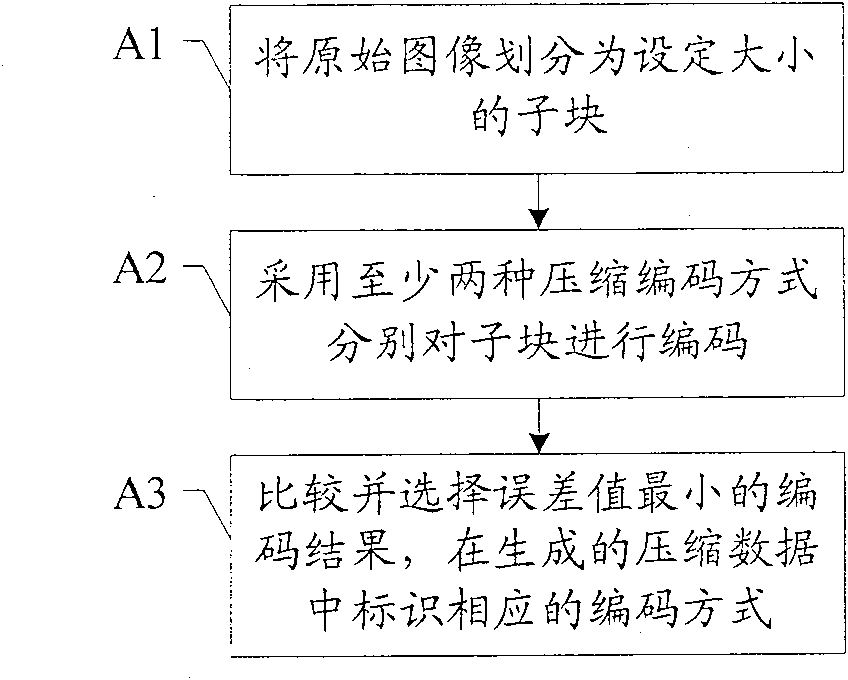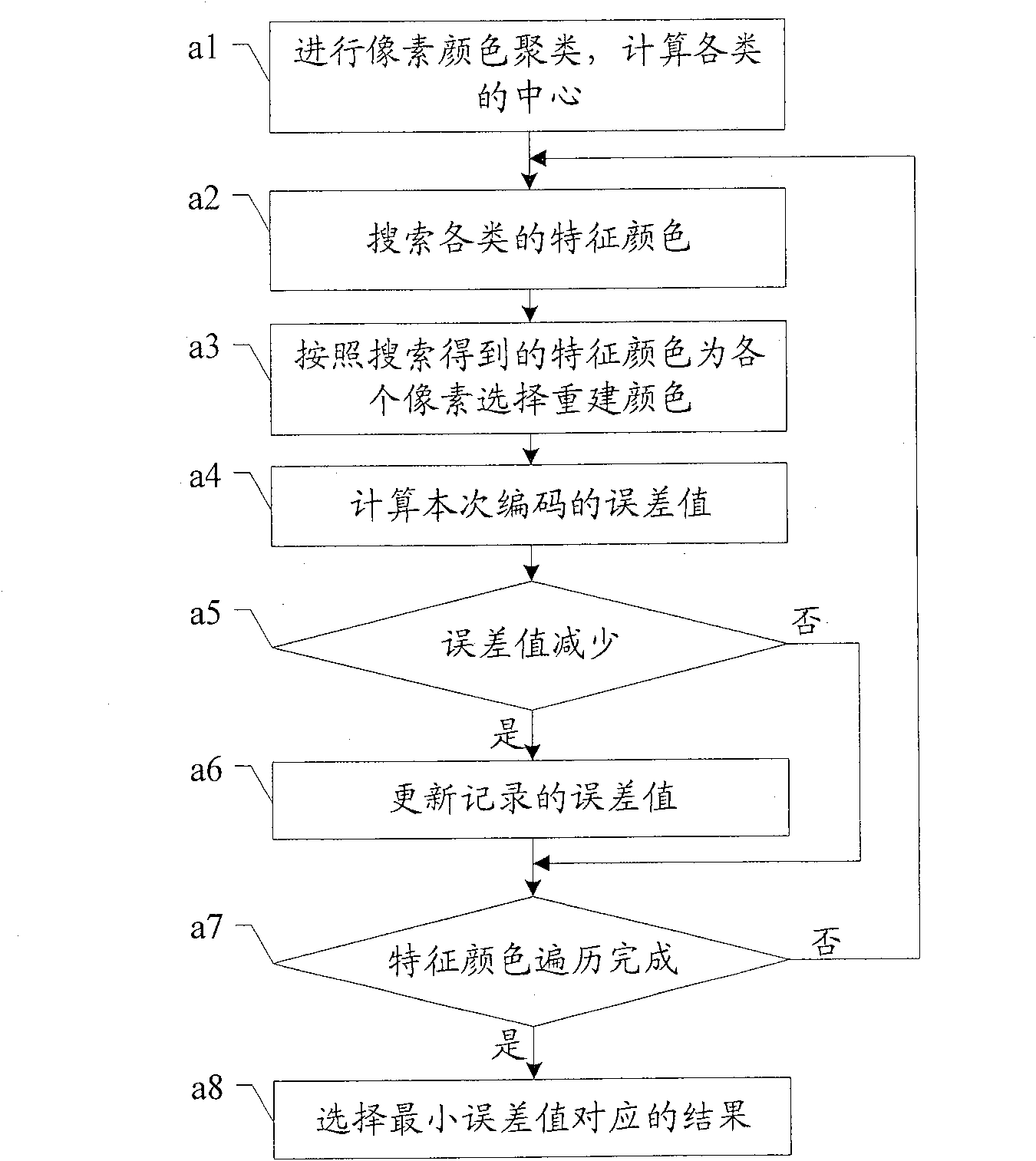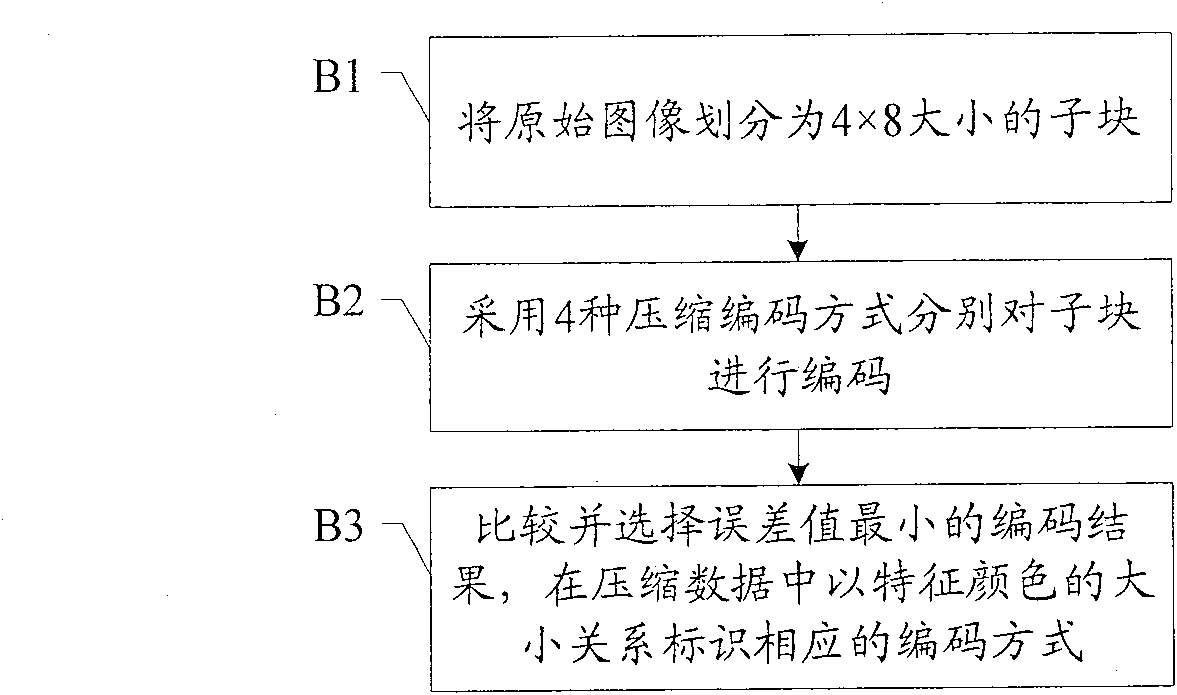Image compression method and image coder
An image compression and compression coding technology, which is applied in the field of image processing, can solve the problems of reduced decoding timeliness, high decoding complexity, poor effect, etc., and achieve the effect of simplifying design goals, reducing complexity, and improving quality
- Summary
- Abstract
- Description
- Claims
- Application Information
AI Technical Summary
Problems solved by technology
Method used
Image
Examples
Embodiment 1
[0036] Embodiment 1, an image compression method, the process is as follows figure 1 shown, including:
[0037] A1, dividing the original image into sub-blocks of a set size;
[0038] The sub-blocks can be divided into squares, such as the generally selected 4×4 or 8×8 division, or rectangular, such as 4×8 or 8×4, etc. Different sub-block division methods correspond to different compressed data lengths and arrangement formats.
[0039] A2. Using at least two compression encoding methods to encode the divided sub-blocks respectively;
[0040] In actual implementation, various encoding methods can be executed in parallel at the same time, or sequentially executed in a serial manner. At present, the steps of encoding sub-blocks in various compression encoding methods generally include:
[0041] 1. Calculating the characteristic color group of the sub-block, the characteristic color group including at least one characteristic color;
[0042] 2. Select the reconstruction color...
Embodiment 2
[0079] Embodiment 2, an image compression method, the process is as follows image 3 shown, including:
[0080] B1. Divide the original image into sub-blocks of 4×8 size; the division method is as shown in Table 1:
[0081] Table 1 Sub-block division method
[0082] Pixel0
Pixel1
Pixel2
Pixel3
Pixel16
Pixel17
Pixel18
Pixel19
Pixel4
Pixel5
Pixel6
Pixel7
Pixel20
Pixel21
Pixel22
Pixel23
Pixel8
Pixel9
Pixel10
Pixel11
Pixel24
Pixel25
Pixel26
Pixel27
Pixel12
Pixel13
Pixel14
Pixel15
Pixel28
Pixel29
Pixel30
Pixel31
[0083] Wherein, Pixel0-31 are 32 pixels of the sub-block.
[0084] B2. Four kinds of compression coding methods are used to encode the divided sub-blocks respectively; this embodiment provides 4 specific coding methods for selection, and each coding method adopts 4 characteristic colors Color11, Color12, Color21, Color22, a...
Embodiment 3
[0146] Embodiment three, an image decompression method, the process is as follows Figure 4 shown, including:
[0147] C1, mapping from the target pixel coordinates to be decompressed to the storage address of the compressed data corresponding to the sub-block;
[0148] When decompressing, the coordinates of the target pixel are generally based on the entire image, so it is necessary to determine which image sub-block the target pixel is located in according to the sub-block division method adopted by the image, and obtain the relative relative position of the compressed data of the sub-block in the memory. address. The compressed data of each sub-block may be stored in the order of scan lines in the memory, or may not be stored in the order of scan lines, but may be stored in an order such as Tianzi.
[0149] C2. Input the compressed data of the sub-block from the storage address;
[0150] After the compressed data of the sub-block is read from the memory for the first tim...
PUM
 Login to View More
Login to View More Abstract
Description
Claims
Application Information
 Login to View More
Login to View More - R&D
- Intellectual Property
- Life Sciences
- Materials
- Tech Scout
- Unparalleled Data Quality
- Higher Quality Content
- 60% Fewer Hallucinations
Browse by: Latest US Patents, China's latest patents, Technical Efficacy Thesaurus, Application Domain, Technology Topic, Popular Technical Reports.
© 2025 PatSnap. All rights reserved.Legal|Privacy policy|Modern Slavery Act Transparency Statement|Sitemap|About US| Contact US: help@patsnap.com



